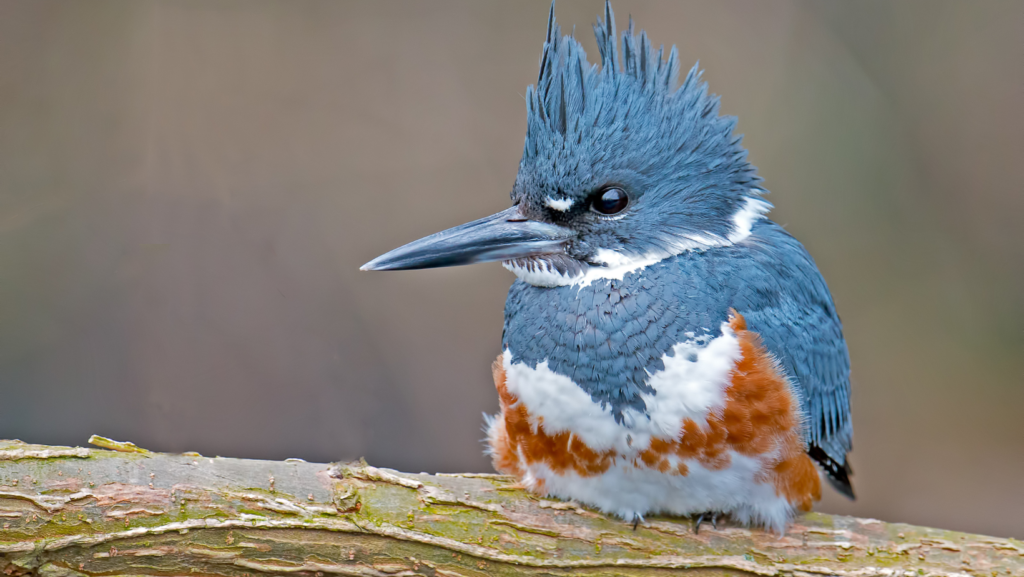The belted kingfisher (Megaceryle alcyon) is a large, conspicuous water kingfisher, native to North America. All kingfishers are placed in one family, Alcedinidae, and recent research suggests that this should be divided into three subfamilies.

Birth and Early Life:
The belted kingfisher (Megaceryle alcyon) begins life as a hatchling in a cavity nest, usually dug into a riverbank or dirt mound. The parents, which share incubation duties, welcome the chicks into the world. Hatchlings are initially altricial, meaning they are born relatively helpless, with closed eyes and scant feathers. The parents diligently feed them a diet primarily consisting of fish, insects, and other small aquatic creatures.
Growth and Development:

As the belted kingfisher chicks grow, they undergo rapid development. Within three weeks, they start to fledge, gradually gaining the ability to fly and hunt. During this phase, they learn essential skills such as diving to catch fish and mastering the art of aerial hunting. The parents continue to guide and feed them during this critical period of development.
Transition to Adult Food:
While the young belted kingfishers initially rely on regurgitated food from their parents, they eventually learn to hunt independently. By the time they reach maturity, usually within a few weeks, their diet primarily consists of fish, supplemented by insects, small crustaceans, and amphibians. The iconic plunge-dive, a hallmark of adult kingfishers, becomes a crucial skill in their pursuit of aquatic prey.
Habitat and Range:

Belted kingfishers are highly adaptable and can be found in various aquatic habitats, including rivers, lakes, ponds, marshes, and coastal areas. They are skilled hunters and prefer habitats with clear water, as their keen eyesight allows them to spot prey beneath the surface. Their range extends across North America, covering a broad spectrum from Alaska and Canada to parts of Central America.
Reproduction:
The belted kingfisher’s breeding season typically occurs in the spring and summer months. They are known for their unique nesting habits, creating burrows in earthen banks. Both male and female contribute to excavating the tunnel, with the male often providing the initial offering of fish to the female as part of their courtship ritual. Once the tunnel is complete, the female lays a clutch of eggs, usually ranging from five to eight, and both parents take turns incubating them for approximately three weeks.
Life Span and Death:

Belted kingfishers have an average lifespan of around six to seven years, although mortality rates are relatively high in their first year of life due to various factors, including predation and accidents. Common predators include larger birds of prey and mammals. In the wild, belted kingfishers may succumb to environmental hazards, diseases, or injuries. Their natural predators, coupled with the challenges of securing a stable food supply, contribute to the variability in their lifespan.
In summary, the belted kingfisher undergoes a fascinating life cycle, from the vulnerable hatchling stage to the skilled adult hunter. Their adaptability, unique nesting habits, and impressive hunting techniques make them a remarkable species within the avian world.

